|
News
17 Apr 2007Sustainable growth of CAD market in RussiaElena Goretkina (PC Week Russia) in her December 2006 interviews (N47 2006) with the heads of Moscow offices of Autodesk, Dassault Systemes, PTC, and UGS as well as with representatives of ASCON and LEDAS put these two questions:
1. Interesting developments on the CAD market in 2006 that have had most impact upon your business?
2. What do you expect in 2007, what trends will dominate the CAD market?
See this publication translated and slightly abridged.
Anastasia Morozova, Marketing Manager, Autodesk Russia & CIS:
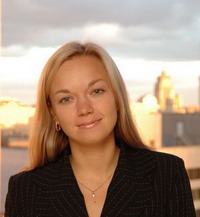 For Autodesk Russia, 2006 was a year of a well-thought policy aimed to provide world-class design opportunities to the engineers and designers in the CIS countries. So far, the Autodesk has increased its CIS business by over 200% in comparison with 2005; while in the last financial quarter of 2006 our office surpassed all other regional Autodesk branches at the sales rate.
For Autodesk Russia, 2006 was a year of a well-thought policy aimed to provide world-class design opportunities to the engineers and designers in the CIS countries. So far, the Autodesk has increased its CIS business by over 200% in comparison with 2005; while in the last financial quarter of 2006 our office surpassed all other regional Autodesk branches at the sales rate.
Such a success can be explained by a number of factors: overall production upsurge, industrial and housing construction as well as intensive laying of the main pipelines have induced the demand for all our sectoral 3D-solutions. An increased share of small and medium enterprises is also worth mentioning, it is especially obvious in the architecture and construction industries comprising many small architectural workshops. Another positive feature is that more and more companies tend to choose software products based on new technologies rather than traditional solutions that have been supplied to the CIS market for quite a while. Increased demand for the advanced solutions shows that our companies are prepared to invest into innovative technologies.
Another important 2006 trend: the growing number of customers who are interested in CAD support of Russian as well as foreign standards indicate that our companies are completing more projects for foreign clients.
Recently Carol Bartz, Chairperson of the Autodesk Board of Directors, visited Moscow. In her speech she named 3 main tendencies of CAD development in the immediate future:
Firstly, an increased role of design that gives additional competitive advantage to the product. It is an important feature for not only consumer, automotive or construction industries but also for all remaining sectors of the economy. If Russian companies firmly intend to compete against the global producers, it means that as early as in 2007 they must start paying considerable attention to that field and, therefore, use world-class tools and advanced technologies which are not only helpful in working on the current issues but may also secure future margin - for instance, the company will be able to deliver on a totally new project or assignment which it has never tried before.
Secondly, transition to the so-called “global world” when design is made in one country, the client is based in another country while the project is implemented in a third country. Therefore, it brings to the foreground the technologies that support Russian as well as world standards, data exchange in a single format, and viewing and editing models and drawings through the Internet.
The third trend relates to the increasing popularity of 3D-technologies. Customers are becoming increasingly aware that a 3D-model is more than just a pretty picture. It offers enormous opportunities that reduce the costs and the period of production.
In conclusion, I would like to underline that business in Russia gradually becomes more “civilized”. Along with the big state-owned enterprises, private companies with a team of 3-5 staff designers tend to obtain licensed software. Apparently, users understand more and more that software is a tool, for instance, like a machine or a car. Car theft is a risky affair. Using non-licensed software is no less dangerous. Besides, by buying legal software we learn to respect somebody else’s intellectual property.
Arseny Tarasov, Regional Director – Russia, CIS and the Baltic States, RTS:
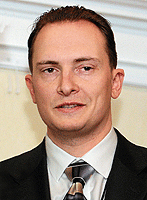 In 2006 the clients’ behaviour became more professional: they tend to carefully analyze and compare the products before making a purchasing decision. To an increasing extent the users need complex solution - “CAD + PDM + Project Management + Integration” - rather than simply CAD. It is also worth noting that last year companies became more interested in the PLM technologies; top management is now also actively involved in considering these issues.
In 2006 the clients’ behaviour became more professional: they tend to carefully analyze and compare the products before making a purchasing decision. To an increasing extent the users need complex solution - “CAD + PDM + Project Management + Integration” - rather than simply CAD. It is also worth noting that last year companies became more interested in the PLM technologies; top management is now also actively involved in considering these issues.
In 2007 we will observe formation of new big holdings; such companies will be able to standardize developments according to a unified system. The CAD market will grow, legalization will continue, which will enable all market players to expand their business by at least dozens of points. As Russia is getting closer to joining WTO, industrial enterprises will increase their investments in product development optimization, which would give additional incentive to expansion of the market for consulting services.
As for our representative office in Russia, next year we plant to double it.
Henry Melus, General Director of the UGS branch in Russia and CIS:
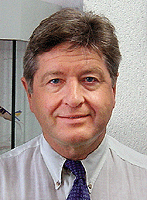 Today many companies turn from 2D modeling to creating complete digital 3D-models of products; moreover, some of them are involved in assessing and choosing solutions for engineering data management at the stŕge of design and production. Our companies gradually reach the new level of IT development when they understand that only joint adaptation of CAD/CAM/CAE and PDM can give considerable advancement in terms of efficiency and economic benefits. Practically all Russian companies have already obtained some computer-aided design facilities so now they start thinking of the opportunities that PDM implementation can bring. Priorities are changing so today providers should offer complex solutions rather than separate CAD/CAM/CAE or PDM products.
Today many companies turn from 2D modeling to creating complete digital 3D-models of products; moreover, some of them are involved in assessing and choosing solutions for engineering data management at the stŕge of design and production. Our companies gradually reach the new level of IT development when they understand that only joint adaptation of CAD/CAM/CAE and PDM can give considerable advancement in terms of efficiency and economic benefits. Practically all Russian companies have already obtained some computer-aided design facilities so now they start thinking of the opportunities that PDM implementation can bring. Priorities are changing so today providers should offer complex solutions rather than separate CAD/CAM/CAE or PDM products.
2006 was successful for UGS both in Russia and on the global market. Perhaps the most important event for us was the release of the CAD/CAM/CAE/PDM-solution Velocity Series for middle-range enterprises.
We believe that the determinant tendency in 2006 will be implementing through a product development chain, that is,- applying solutions that cover all stages of product lifecycle.
David Levin, General Director, LEDAS:
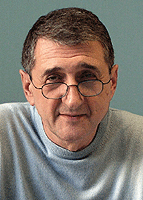 In 2006 the CAD market showed confident expansion characterized by a growing number of users – small and medium businesses - and an increased clients’ interest towards comprehensive PLM and ERP solutions. The second isicad forum was a good proof of it. Plus the forum manifested another specific feature of the outgoing year: vendors started paying more attention to Siberia: it is not a coincidence that several market leaders sponsored the venue.
In 2006 the CAD market showed confident expansion characterized by a growing number of users – small and medium businesses - and an increased clients’ interest towards comprehensive PLM and ERP solutions. The second isicad forum was a good proof of it. Plus the forum manifested another specific feature of the outgoing year: vendors started paying more attention to Siberia: it is not a coincidence that several market leaders sponsored the venue.
Increasing segment of CAD for SME as well as easier solutions in general – is an obvious global trend. It seems to me that today’s structure of the Russian economy allows us to outdo the West in this area: many new Russian small and medium companies have much higher level of economic and creative development in comparison with beg industrial enterprises. Exactly such adaptability is needed to implement advanced solutions.
Market trends has encouraged LEDAS to restructure our business: along with developing computational software components (for CAD/CAM/CAE/PDM and ERP developers) we have started rendering services on training and consulting the users of such solutions as well as put efforts towards creating a PLM competence center for the companies in the Siberian Federal District.
Increasing growth of the CAD market in 2007 will be accompanied by its more sophisticated culture –visible transition towards using legal software, implementing comprehensive solutions, and coping with a greater demand for engineering consulting. Initially, understanding of the importance of a comprehensive approach can result in considerably higher demand for PDM and growing influence of PDM-solutions on the CAD market. In principle, new industrial productions, which are developing due to the growth of the Russian economy, head for the complex systems from the very beginning so we should expect interesting news about such kind of implementations.
Therefore, to keep the leadership positions on the CAD market in 2007, suppliers would have to pay considerable attention to small and medium businesses, offer comprehensive solutions, expand their presence in Siberia and other eastern regions of Russia, promote software licensing and contribute to dissemination of engineering and general IT knowledge.
I believe that intensive development of CAD/PLM/ERP market culture in Russia can be achieved by joint efforts of all serious players. LEDAS endeavours to make good use of the isicad forums to this purpose.
Maxim Bogdanov, Marketing Director, the ŔSKON Group:
 In general the market development in 2006 was rather successful, with positive trends. The same is relates to the main features of our business. Favourable economic situation and increasing industrial production and Russia and the CIS is playing its role.
In general the market development in 2006 was rather successful, with positive trends. The same is relates to the main features of our business. Favourable economic situation and increasing industrial production and Russia and the CIS is playing its role.
At the same time, such factor as low profitability of Russian companies in comparison, for instance, with their Chinese counterparts, is getting more and more important. Therefore, the management of our companies and big holdings pay increasingly more attention to improving efficiency of the companies’ business-processes, including those required at the initial stage of manufacturing and process planning which is the key process of the modern industrial organization.
It is for that reason many production companies have included into their IT-strategy such leads as building geographically distributed chains “R&D - Production”; creating single information space for product development; and implementing PLM and CAD technologies. Demand for our products and recognition of their quality is growing continuously and we feel it in our work: in 2006 the number of complex projects based on the “Lotsman:PLM” system for engineering data management exceeded a hundred.
In 2007 we should observe the same trends described above. If the business environment remains favourable, the CAD market will show sustainable development. However, as a Russian developer, ASCON is still concerned about insufficient support of domestic producers by the Russian government. Undoubtedly, protective measures are necessary to overcome excessive dependence of the Russian economy on the raw materials export and wider use of the Russian intellectual potential.
On the other hand, certain progress has been achieved in combating illegal (unlicensed) software which can be accounted to the publicity campaigns organized by the authorities, active work of non-governmental organizations (for example, the NP PPP Anti-Pirate Association, of which our company is also a member), as well as the actions carried out by the law enforcement bodies. We are very pleased that the leading actors on the CAD market have also been actively involved in such work. It instills confidence that in 2007 legalization will be accelerated.
Certainly, Russia’s joining WTO will become an important factor: For Russian producers it will be much more difficult to compete with the global producers. IT budgets must be optimized which would force companies to carefully select the systems on the basis of their “cost / functionality” ratio.
Still using all-round computer-aided facilities faces a number of problems: shortage of staff, technology breakdown in developing sophisticated systems for engineering data management, or insufficient functionality and software quality.
As for the ASCON Group, in 2007 it will continue its efforts to become a global player. In 2006 we localized the “Compass-3D” system in English and made its successful presentation at CAT/PRO in Germany. We saw a great interest towards this Russian solution and discovered good opportunities for its further promotion.
Francis Bernard, President, Dassault Systemes Russia:
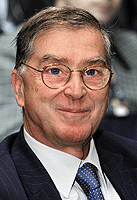 The highest level of income reached by Dassault Systemes in various regional markets around the world was in Russia and the CIS— around 40%. However, the Russian CAD and PLM market heavily depends on the investment policy exercised by the Russian government in particular segments of the economy. Industry restructuring as well as strengthening Russia’s global position are the main factors for reengineering of design and production by means of PLM-solutions. The Russian branch of Dassault Systemes intends to “join the club”.
The highest level of income reached by Dassault Systemes in various regional markets around the world was in Russia and the CIS— around 40%. However, the Russian CAD and PLM market heavily depends on the investment policy exercised by the Russian government in particular segments of the economy. Industry restructuring as well as strengthening Russia’s global position are the main factors for reengineering of design and production by means of PLM-solutions. The Russian branch of Dassault Systemes intends to “join the club”.
Buying and including a new PLM-product – MatrixOne – produced by a company of the same name, in our line of products, was definitely a big event for Dassault Systemes in 2006. Certainly, it will help expanding the rage of our products and entering new vertical markets, such as biosciences, food industry, retailing and logistics.
Industrial co-operation, which has already started in Russia, will continue in 2007. We are convinced that when the newly formed structures manage to resolve all organizational issues, every top executive will undoubtedly consider implementing technologies for product lifecycle management.
Talking about single industries, it is possible to state that aircraft and motorcar construction companies will continue implementing PLM. In 2007 we should also expect transition towards PLM in machine building and oil and gas sectors. Demand from small- and medium –businesses is growing; so we have released a new, easy-to-use solution designed to satisfy their requirements.
At the global level, Dassault Systemes has set the target to double the level of income by 2010 in comparison with 2005. In Russia and the CIS our aim is to double the sales volume within a maximum short period.
Permanent link :: http://isicad.net/news.php?news=11027

|